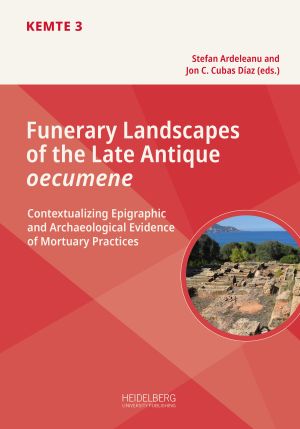Zitationsvorschlag
Lizenz (Kapitel)

Dieses Werk steht unter der Lizenz Creative Commons Namensnennung - Weitergabe unter gleichen Bedingungen 4.0 International.
Identifier (Buch)
Veröffentlicht
L’épigraphie et les pratiques funéraires dans la province protobyzantine d’Arabie (IVe–VIIe s. apr. J.-C.)
Abstract During the Early Byzantine period (4th–7th c. AD) the funerary epigraphy of the Provincia Arabia saw a very strong decrease in terms of quantity and content, in contrast to developments further south (in Palaestina Tertia, the country of Moab, Zoora and the Negev). First of all, stelae became rare in Arabia. Subsequently, in the course of the 4th and at the beginning of the 5th c. AD, inscriptions of foundation or ownership of tombs diminished in number. This is particularly obvious in the Hauran, the northern part of the province, where funerary epigraphy had been flourishing during the Roman Imperial period, and where epigrams were still frequent on 4th c. AD tombs. Although a slight revival of funerary stelae apparently took place in the 6th c. AD, this downward trend continued until the complete disappearance of Christian funerary epigraphy in the Early Islamic period. All of the scarce funerary inscriptions from the Early Byzantine period we possess are christianized, either by engraved crosses or by Christian formulas. New practices also appeared. Anepigraphic stelae, simply decorated with crosses, became common in necropolises; offerings were made to Christian shrines for the rest of the deceased, while the rest of the dead were usually buried elsewhere; privileged tombs, finally, were built in or next to certain churches, the clergy and elite families being the main beneficiaries of these privileged tombs.
Keywords Provincia Arabia, Jordan, Syria, Hauran, Early Byzantine period, Greek inscriptions, Aramaic inscriptions, tombs, funerary epigraphy, Christianization






